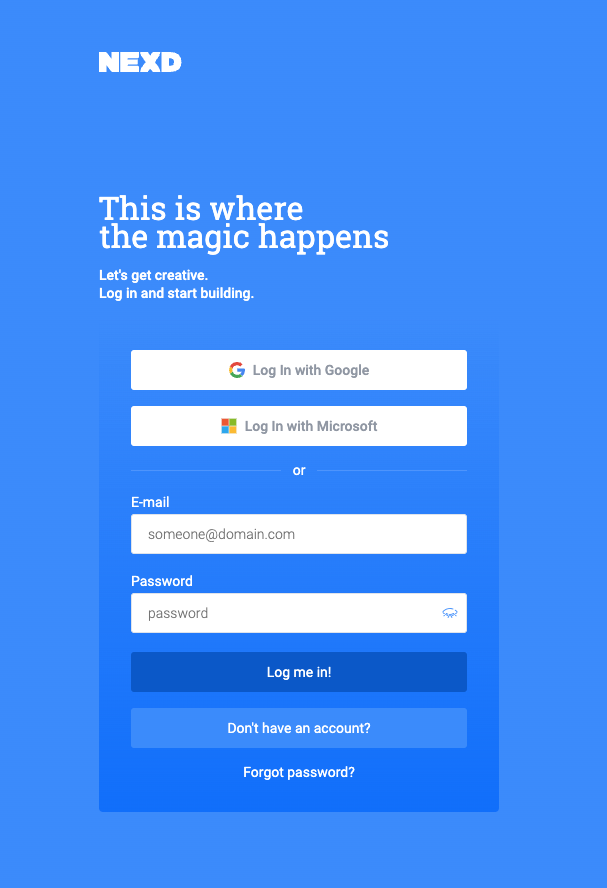Best Practices for Programmatic Creatives
Programmatic advertising is not in the skillset of most marketers. Many specialize in social media, search or SEO. Programmatic is most often left to advertising agencies.
However, times are changing, new platforms are coming to the market, that allow marketers from small and medium size businesses access it. Besides audience targeting, an integral part of the campaigns are programmatic creatives and learning how to do it right is important for any marketing professional or advertiser.
This article delves into what programmatic creative is, explores various ad types, and shares best practices and strategies for optimizing your advertising efforts.
What are programmatic creatives?
Programmatic creative refers to the use of technology to automate the buying and customization of digital ads. It allows for dynamic ad creation where elements such as images, messages, and offers can be tailored in real time to match the audience’s preferences, behaviours, and real-time data. This approach helps in delivering more relevant and effective advertising experiences. There are set sizes for such creatives which have to be followed.

What are the 4 types of programmatic ads?
Programmatic advertising consists of various ad types, each serving unique purposes and audiences. The four main types are:
- Display Ads: These are the visual banner ads that appear on websites. They can be static or interactive and are common across the web.
- Video Ads: These ads include pre-roll, mid-roll, or post-roll video clips that play before, during, or after video content.
- Native Ads: Designed to blend in with the content of the webpage, native ads offer a non-disruptive user experience by mimicking the appearance of the site’s editorial flow.
- Mobile Ads: Specifically tailored for mobile devices, these can range from standard banner formats to full-screen interstitials.
To learn more about these ad types and how they can be optimized, visit this detailed guide.
What is the best practice for programmatic creatives?
Best practices in programmatic creative involve a mix of art and science. Here are a few key strategies:
- Personalisation: Tailor your ads based on user data such as location, browsing behaviour, and purchase history to increase relevance.
- A/B Testing: Continuously test different versions of your ads to see what works best and refine based on performance.
- Use of Rich Media: Engage users with interactive elements like videos, clickable elements, and animated features to stand out.
- Optimization for Devices: Ensure your creatives are optimized for different devices, enhancing visibility and user experience across all platforms.
Find out here what tools you could use to make superior digital ads: 6 best creative management platforms.
Designing the best programmatic creative
Creating the best programmatic creative involves understanding the capabilities and best use of different formats, such as basic display banners, HTML5 ads, and rich-media ads. Here’s how to approach each:
- Basic Display Banners: Start with a compelling headline and a clear, engaging image. Keep the message concise and include a strong call-to-action (CTA). Ensure the design is visually appealing but not overly complex, which could detract from the message.
- HTML5 Ads: Utilize the flexibility of HTML5 to include animations and interactive elements that can adapt based on data inputs like location and user behaviour. This format allows for more creativity and engagement compared to static banners. Tools like Google Web Designer can help in crafting these ads or contact a creative developer.
- Rich-Media Ads Using Nexd Campaign Manager: Leverage Nexd’s campaign manager to create rich-media ads that offer advanced interactivity and animation without heavy loading times. These ads can feature elements like video, audio, and other interactive components that encourage user engagement. The platform allows anyone the build a programmatic ad with drag-and-drop capability, without needing any additional skills.

By designing with user experience in mind and utilizing advanced tools and platforms, advertisers can significantly improve the impact of their programmatic creatives.
What are the ways programmatic advertising is sold?
Programmatic ads can be purchased through several methods, each offering different levels of targeting, transparency, and cost-efficiency:
- Real-Time Bidding (RTB): Ads are bought in real-time auctions, with advertisers bidding on each ad impression as it becomes available.
- Private Marketplace (PMP): Invitation-only marketplaces where high caliber publishers offer premium inventory to a select group of advertisers.
- Programmatic Direct: A method where advertisers directly buy guaranteed ad impressions from publishers at a fixed price.
- Programmatic TV: Applies programmatic technology to the buying of TV ad space, merging digital advertising’s efficiency with traditional TV’s broad reach.
If you want to know more about this, this guide on programmatic buying explains it all.
Why add programmatic ads to your campaigns?
Choosing programmatic ad delivery offers several advantages:
- Efficiency: Automation reduces the time and manpower needed for ad placements.
- Precision: Advanced targeting capabilities ensure ads reach the most appropriate audience, maximizing impact.
- Scalability: Advertisers can manage multiple ad campaigns across various channels from a single platform.
- Analytics: Instant access to data allows for ongoing optimization of campaigns based on performance metrics.
Programmatic advertising offers a powerful way to enhance ad relevance and engagement, driving better outcomes for businesses and improved experiences for consumers. For a deeper dive into mobile advertising and its formats, check out this informative article.
In conclusion, embracing these best practices in programmatic advertising not only streamlines your advertising efforts but also delivers more personalized and engaging ads to your audience. Stay ahead of the curve by continually adapting to new technologies and strategies in this dynamic field.

Get Started
Sign up to Nexd Campaign Manager for a free 14-day trial and start creating environment-friendly and highly engaging programmatic creatives!
